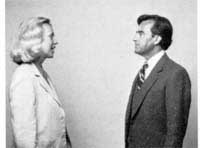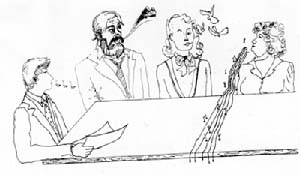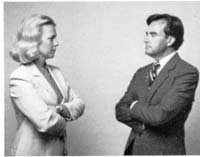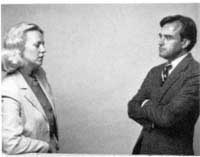 |
Crossover mirroring is almost never noticed, because most of us are
unaware of our habitual movements, such as pushing back our eyeglasses,
patting our hair, or rubbing our noses, if the other person repeats movements
such as these, you can match his or her rhythm by tapping a pencil, jiggling
a foot, or drumming your finger. Once you create rapport, you can move
on toward your outcome.
Why does matching build rapport? Good question. We are not sure we
have all the answers. Rapport seems to be similar to rhythm entrainment,
a natural phenomenon described by ltzhak Bentov in Stalking the Wild Pendulum.
Different sized clocks with the same sized pendulums, when placed together
on a wall, will gradually synchronize their swings. Discussing this phenomenon
in machines and in man, Bentov concludes, "Nature finds it more economical
in terms of energy to have periodic events that are close enough in frequency
to occur in phase or in step with each other"
|

![]()




